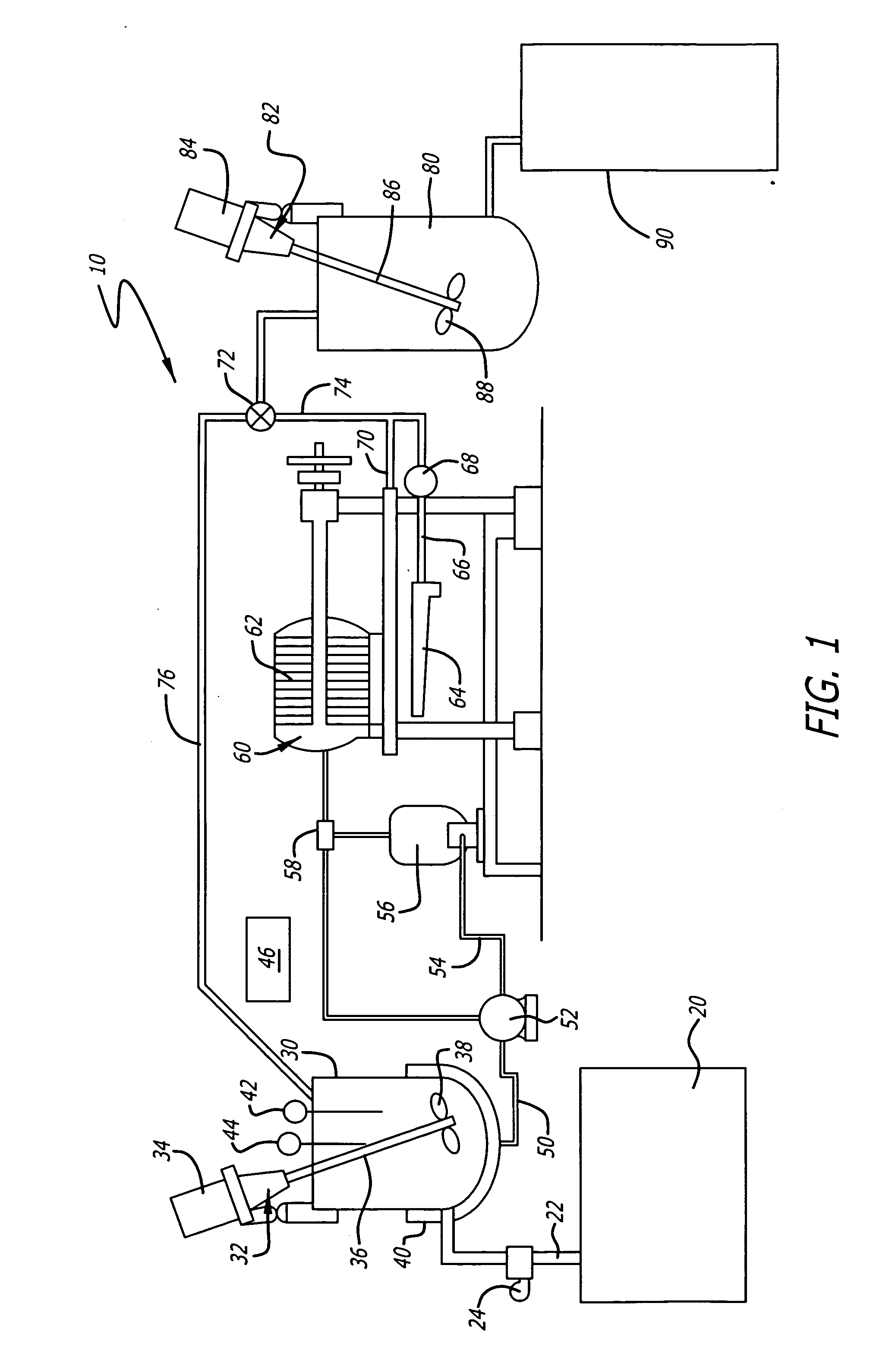Biofuel conversion process
a biofuel and conversion process technology, applied in the field of biofuel conversion process, can solve problems such as inefficiency of processes, and achieve the effect of enhancing energy conten
- Summary
- Abstract
- Description
- Claims
- Application Information
AI Technical Summary
Benefits of technology
Problems solved by technology
Method used
Image
Examples
Embodiment Construction
[0015]FIG. 1 schematically depicts a basic biofuel conversion apparatus 10 according to a first aspect of the present invention. The apparatus 10 includes an oil tank 20 that is either a large storage tank or plurality of storage drums. Oil from tank 20 is routed via pipe 22 and pump 24 to a catalyst tank 30. The catalyst tank 30 includes a mixing apparatus 32, for example a motor 34, shaft 36 and impeller 38. The lower section of the catalyst tank 30 includes a heating assembly 40, for example a steam heat exchange system. The catalyst tank 30 also includes a temperature sensor 42 and may include a level sensor 44. The temperature sensor 42 is connected to a controller 46 that controls the pump 24 and the timing of the process as well as the temperature control for the heating assembly 40.
[0016] Upon completion of a reaction period in the catalyst tank 30, the mixture is delivered via a pipe 50 to pump 52. The output of pump 52 is directed to a pipe 54. Pipe 54 delivers the mixtur...
PUM
| Property | Measurement | Unit |
|---|---|---|
| temperature | aaaaa | aaaaa |
| temperature | aaaaa | aaaaa |
| weight percent | aaaaa | aaaaa |
Abstract
Description
Claims
Application Information
 Login to View More
Login to View More - R&D
- Intellectual Property
- Life Sciences
- Materials
- Tech Scout
- Unparalleled Data Quality
- Higher Quality Content
- 60% Fewer Hallucinations
Browse by: Latest US Patents, China's latest patents, Technical Efficacy Thesaurus, Application Domain, Technology Topic, Popular Technical Reports.
© 2025 PatSnap. All rights reserved.Legal|Privacy policy|Modern Slavery Act Transparency Statement|Sitemap|About US| Contact US: help@patsnap.com



